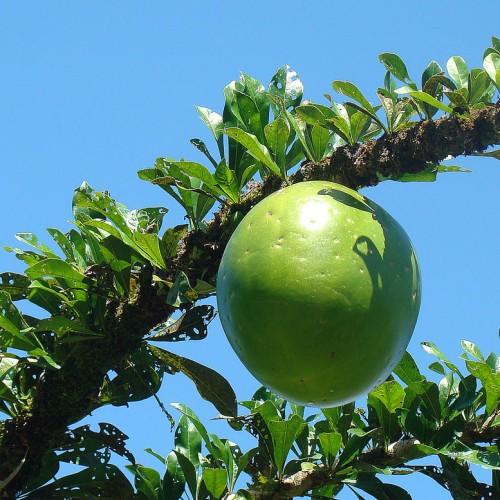
common calabash tree
Crescentia cujete
Cycle:
Perennial
Watering:
Average
Hardiness Zone:
10 - 12
Flowers:
Flowers
Sun:
Full sun,part shade
Fruits:
Fruits Ready In Summer
Edible:
Yes
Leaf:
Yes
Growth Rate:
Low
Maintenance:
Moderate
Salt Tolerant:
Yes
Care Level:
Medium
watering
The common calabash tree requires light to moderate watering. Water regularly during the active growth season (spring through early fall) to keep the soil moist but not saturated. During the winter and summer, water the tree only when the soil dries out, as overly wet soil can damage the roots. When watering, use a gentle stream to avoid washing away the soil. Pour around the tree, as close to the roots as possible, and allow the water to be absorbed until the soil is moist.
sunlight
The common calabash tree (Crescentia cujete) requires bright, indirect sunlight and is suitable for warm climates. The optimal amount of sunlight for the common calabash tree is 6 to 8 hours per day, with the sun's rays ideally coming in from the morning to late afternoon. Direct sunlight for the tree should always be avoided, as this can cause the tree's leaves to be burned or desiccated. The tree should also be shielded from strong winds, which can cause it to wilt and become stressed.
pruning
Common calabash trees should generally be pruned every 1-2 years. Pruning should be done in late winter or early spring to promote healthy growth. It is important to remove dead and dying branches, as well as any unruly or weak branches. Thinning out the tree will also help with air circulation and reduce the likelihood of diseases. Pruning can also be done to encourage flowering and to help keep it a more manageable size. When pruning, make sure to cut away any crossing branches, which can interfere with the tree’s natural growth and development.
